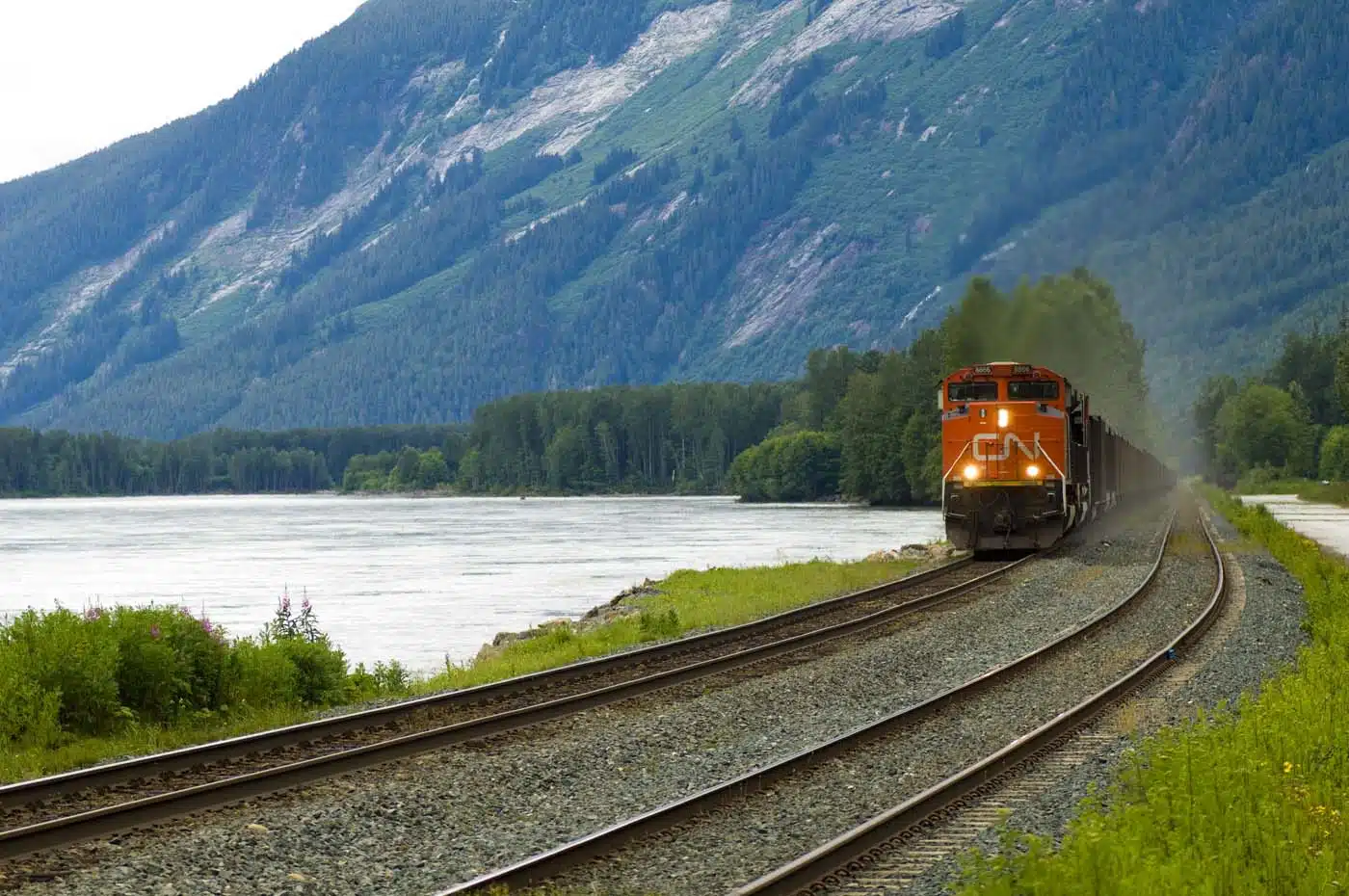Getting from point A to point B can be a complicated operation for a freight train. In a single moment, a train — measuring up to a mile and a half in length — can be climbing and descending a hill. Half its cars may veer left while the other half turn right. All while hauling thousands of tons of freight.
Today’s freight trains handle those complexities with ease and agility, thanks to advanced locomotive technology. More than just brawny engines that power trains, today’s locomotives also have brains: smart sensors and computer programs that monitor and assess dozens of variables — such as the weight and length of the train, the route’s geography and even wind direction. These state-of-the-art locomotive technologies help freight railroads preserve the environment while addressing climate change.
Reducing Emissions, Saving Fuel
Imagine the physics at play when a mile-long train both ascends and descends a hill — at the same time. Its locomotive’s advanced fuel management system gives the engineer real-time power and speed recommendations that improve fuel efficiency by up to 14%.
The latest locomotives, known as Tier 4, were specifically designed to reduce emissions. The Environmental Protection Agency requires that Tier 4 models reduce nitrogen oxide and particulate matter emissions to below the levels mandated for older models: 90% below Tier 1 levels and 70% below Tier 3 levels. Locomotive manufacturers like GE Transportation and Progress Rail have responded by upping their tech game. To meet these ambitious emissions goals, GE’s engineers installed 50 sensors in their locomotive’s 4,400 horsepower engine to measure things like speed, temperature and fuel air mix. The locomotive adjusts its combustion process based on these factors, reducing emissions.
Other pieces of locomotive technology go even further. Trains often rely on multiple locomotives spread throughout the train to enhance efficiency. Progress Rail’s SmartConsist adjusts the power setting on each locomotive individually to optimize efficiency and reduce fuel waste while maintaining a consistent speed.
Locomotives also use anti-idling technologies, known as Start-Stop systems, that save fuel by automatically shutting down a locomotive if it idles too long. The Progress Rail Start-Stop system, for instance, reduces unnecessary idle time by 50%. Thanks in part to these technologies, freight rail is the most fuel-efficient way to move freight over land, moving one ton of goods an average of nearly 500 miles per gallon of fuel.
Predicting & Preventing Problems
Advanced technology also identifies locomotive performance issues and maintenance needs proactively, allowing railroads to schedule repairs efficiently and minimize the time equipment spends in the shop. While a train is on the move, hundreds of sensors throughout the locomotive continually gather data on the performance of individual components. Sensors transmit the data to analysts who use real-time software to identify equipment that may need maintenance, ensuring minor issues don’t become larger problems.
The huge amount of data collected is further analyzed to identify patterns and look for relationships that can help determine when a component will need to be repaired or replaced weeks and even months ahead of time. With this information, railroads can schedule maintenance and repairs at the optimal time — rather than after a breakdown occurs — helping to increase network fluidity.
Future Focus
U.S. businesses, consumers and the broader economy all stand to benefit from enhanced safety, efficiency and productivity of the U.S. freight rail network. With this in mind, railroads and rail equipment manufacturers will continue to build upon the successes of today’s modern locomotives through advanced technologies. Today, for example, railroads have deployed locomotive technologies that can help reduce or eliminate human error, such as Positive Train Control (PTC). Railroads look to explore system upgrades to derive additional safety benefits.
